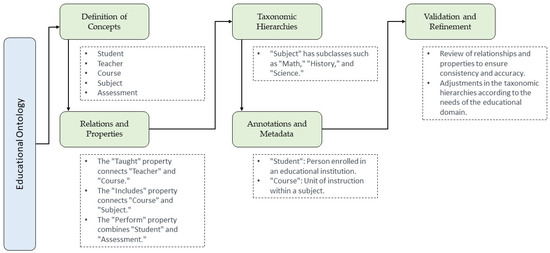Bioinformatics Tutor Can Be Fun For Anyone
Table of ContentsSome Known Facts About Bioinformatics Tutor.Some Known Facts About Bioinformatics Tutor.The Main Principles Of Bioinformatics Tutor Bioinformatics Tutor Fundamentals ExplainedEverything about Bioinformatics Tutor
Of the total participants entailed in the training, 80% were pupils from public college establishments, while the staying 20% came from private establishments. To get approved for a certification of involvement, students were required to participate in at the very least 90% of the overall training hours. As a result of this need, an impressive 95% of the participants effectively obtained their certifications, having not just satisfied the minimum presence requirements however likewise completed all designated tasks throughout the training.During the elevation of the COVID-19 pandemic, particularly in between June and August 2020, the job team was tasked with arranging specialized training in bioinformatics. This training was particularly focused on trainees from the study team Center for Study in Applied Computing at the Federal University of Pará (UFRA) The adjustment to remote knowing systems because of the pandemic created an opportunity to explore new training approaches and electronic tools that improved both reach and performance.
To react to the growing demand in the computing and life sciences areas, a sophisticated training course was presented in 2020 entitled Introduction to Artificial intelligence. This course was designed to provide an easily accessible yet detailed summary of Expert system techniques, especially as used in bioinformatics. The program was performed over three months, from October to December 2020, and was delivered totally online via the Google Meet platform. This virtual layout made it possible for engagement from trainees across Brazil, most of whom may not have had the opportunity to participate in in-person sessions.
The Bioinformatics Tutor Statements
Roughly 50% of the overall training hours were committed to sensible activities where students built intelligent models and applications in a variety of scientific domains, including genetics, molecular biology, and environmental information evaluation. These systems enabled students to engage in real-time information adjustment, version training, and formula trial and error.
Sixty of them were affiliated with numerous higher education establishments in the state of Pará, while the staying twenty came from institutions situated in five other Brazilian states. By presenting Artificial Intelligence in a practical and pertinent context, the effort served to connect the gap in between theory and real-world application, giving trainees with a strong foundation for future study or work in the field.
The training effort formed component of a broader scholastic outreach effort understood as the Bioinformatics on the Road task. This project has, for many years, introduced dozens of pupils to the world of bioinformatics and computational biology. The occasions held under this umbrella effort have happened throughout multiple areas and years, as summed up in Table 1 (List of occasions, areas, years, and total numbers of pupils and instructors)
Among one of the most amazing results of the Bioinformatics when traveling initiative has actually been its payment to the development of decentralized research teams. Numerous of these groups, at first combined by their participation in training events, have actually considering that gone on to produce independent clinical study in partnership with local academic establishments. The training not just cultivated scientific reasoning within the context of bioinformatics however likewise stimulated joint relationships that prolonged beyond the training setting. These collaborations have caused boosted local scientific efficiency and added meaningfully to the advancement of the broader bioinformatics neighborhood in Brazil.
Some Known Details About Bioinformatics Tutor
The exact same group, leaving out IH and RR, also acted as tutors for the functional training modules. Financing for the project was given via the grant 88887.200562/ 2018-00 from CAPES.
The Federal College of Pará's Office of Study (PROPESP/UFPA) also supplied financial backing, especially for the production of the last manuscript. The writers state no financial or business problems of rate of interest that could have influenced the research study. In addition, all viewpoints and interpretations expressed in this post are only those of the authors and do not necessarily show those of their particular institutions, the publisher, editors, or customers entailed in the magazine procedure.

10 Easy Facts About Bioinformatics Tutor Explained
From an instructional viewpoint, the training approach utilized in the training was deliberately interactive. Classes were carried out in a manner that urged pupil involvement and discussion, surpassing rote memorization to explore exactly how ideas are established, applied in every day life, and evaluated in academic settings. The instructional philosophy focused on Read Full Report supporting both strong and having a hard time pupils, providing personalized support, and structure confidence through continual mentorship and persistence.

Each group, including roughly 36 individuals, was supported by 3 coaches-- a lot of whom were postdoctoral scientists with specific proficiency. These mentors not only helped develop the team jobs however likewise facilitated their execution, guaranteeing that each research question was both pertinent and properly difficult. The goal was to provide a naturally reasonable context that individuals might explore with flexible objectives and accessibility to curated datasets.
For extra understandings into the methodology and results of this project-based knowing strategy, visitors are routed to S1 Text, that includes detailed summaries of the instructional framework, analysis techniques, and task styles used in the training sessions.
3 Easy Facts About Bioinformatics Tutor Shown
Of the total amount participants involved in the training, 80% were trainees from public higher education and learning institutions, while the continuing to be 20% came from personal establishments. To qualify for a certificate of engagement, students were required to attend at the very least 90% of the complete training hours. Especially, past the students who signed up in the training sessions, 7 seasoned instructors participated in providing the programs, while 3 specialized study professors worked with the general training procedure. About 50% click this of the complete training hours were dedicated to useful activities where students built intelligent models and applications in a range of scientific domain names, consisting of genetics, molecular biology, and environmental information evaluation. The training not just promoted scientific thinking within the context of bioinformatics but also triggered collaborative relationships that extended past the training setting.